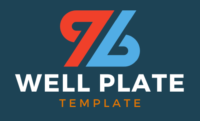When working in research labs, precision and standardization are key to achieving reliable and reproducible results. One essential tool that occupies a central role in many experiments is the 384 well plate. Whether you’re conducting high-throughput screening, PCR assays, or cell cultures, understanding the dimensions of a 384 well plate is crucial for optimizing experiment design and setup.
In this guide, we’ll explore everything you need to know about 384 well plates, from their exact dimensions to the different types available. By the end, you’ll be equipped with precise information that can help you choose the right plate for your work.
What Are 384 Well Plates and Why Are They Important?
A 384 well plate is a flat, rectangular microplate with 384 individual wells arranged in 16 rows and 24 columns. These well plates are industry-standard tools that facilitate medium-throughput to high-throughput research, commonly used in biological, chemical, and pharmaceutical laboratories.
Why use 384 Well Plates?
384 well plates allow researchers to conduct multiple experiments in a single run while minimizing reagent consumption and the space required. From drug discovery to genomics, these plates streamline workflows by enabling automation and offering precise, repeatable data across numerous test samples.
Key applications of 384 well plates include:
- ELISA (enzyme-linked immunosorbent assay)
- qPCR and RT-PCR
- Cell-based assays
- High-throughput drug screening
- Biochemical and binding assays
Precision in their design and dimensions ensures compatibility across equipment like pipetting robots, centrifuges, plate readers, and liquid handlers. This makes knowing their dimensions a critical factor in research workflows.
Dimensions of a Standard 384 Well Plate

To properly utilize a 384 well plate, it’s essential to understand its dimensions. Most 384 well plates follow the industry-standard ANSI/SLAS (American National Standards Institute/Society for Laboratory Automation and Screening) guidelines to ensure compatibility with automated systems and instruments.
Overall dimensions:
- Length: 127.76 mm (5.03 inches)
- Width: 85.48 mm (3.36 inches)
- Height: 14.22 mm (varies slightly depending on plate type, with a typical range of 10–20 mm)
Well specifications:
- Number of wells: 384 (16 rows × 24 columns)
- Well diameter: ~3.6 mm (circular wells; square wells will have slightly different measurements)
- Well depth: ~11 mm to 13 mm depending on manufacturer
- Working volume per well: Between 20 µL and 120 µL
- Well spacing (center-to-center distance): 4.5 mm
These dimensions ensure consistent spacing and alignment for use in automation systems and multi-channel pipetting.
Compatibility tip:
If you’re working with plate readers or robotic systems, always confirm that your 384 well plate conforms to standard ANSI/SLAS guidelines to avoid equipment mismatches.
Types of 384 Well Plates
The versatility of 384 well plates lies in the variety of formats available. Researchers can choose from different types based on specific experimental needs.
1. Standard 384 Well Plates
These are the most commonly used plates and are designed for general applications like ELISA or routine assays. They conform closely to the dimensions listed above and are available in sterile and non-sterile options.
2. Low-Volume 384 Well Plates
Low-volume plates are designed to hold smaller sample and reagent volumes, typically in the range of 10 µL to 50 µL. These plates are ideal for minimizing reagent costs and are commonly used in qPCR and high-throughput screenings.
- Well depth can be shallower compared to standard plates.
- Application example: DNA quantification where only micro-liter volumes are required.
3. Skirted 384 Well Plates
Skirted plates have a rim or “skirt” that extends around the base of the plate. This rim provides additional structural rigidity, making the plate more stable during automated processes.
- Key feature: Excellent compatibility with robotic systems as they offer more precise alignment.
- Use case: Robotic pipetting systems that demand heightened stability.
4. Unskirted 384 Well Plates
Unskirted plates do not have an outer rim, which makes them lighter and more cost-effective. They are commonly used in smaller-scale manual applications where automation is not a concern.
- Key benefit: Lightweight and ideal for budget-conscious research teams.
- Use case: Educational or small-scale labs performing non-automated assays.
5. Special Coated 384 Well Plates
Some plates feature specialized coatings (e.g., cell culture-treated plates or low-binding plates) that enhance their performance for specific applications.
- Cell adhesion plates (treated with collagen, fibronectin, or polystyrene) support the growth of adherent cells.
- Low-binding plates reduce nonspecific binding of proteins, critical for biochemical assays.
How to Choose the Right Type?
Selecting a plate comes down to your study’s requirements:
- High-throughput workflows: Use skirted or low-volume options.
- Cell culture experiments: Go for cell culture-treated plates.
- Budget considerations: Stick with unskirted, general-purpose plates.
Each type offers unique features to align with your lab’s needs.
Final Thoughts: Understanding 384 Well Plate Dimensions for Better Lab Efficiency
Getting familiar with the precise dimensions of a 384 well plate is essential for running efficient and accurate experiments, especially in high-throughput workflows. From the plate’s physical dimensions to its compatibility with automated systems, these tools are designed to take the guesswork out of large-scale experiments.
But remember, selecting the right type is just as important as knowing the dimensions! Whether you’re conducting PCR, ELISA, or cell-based assays, choosing between standard, low-volume, or skirted options can streamline your workflow and improve your results.
Start Your Lab’s Next Experiment on The Right Foot
Boost the accuracy of your research with confidence. Always check the dimensions and specifications that best align with your experimental needs. Got more questions about 384 well plate dimensions or types? Feel free to connect with us for deeper insights and recommendations tailored to your lab!

